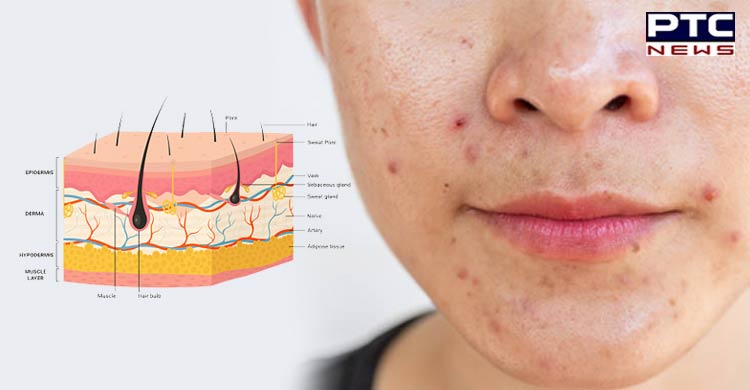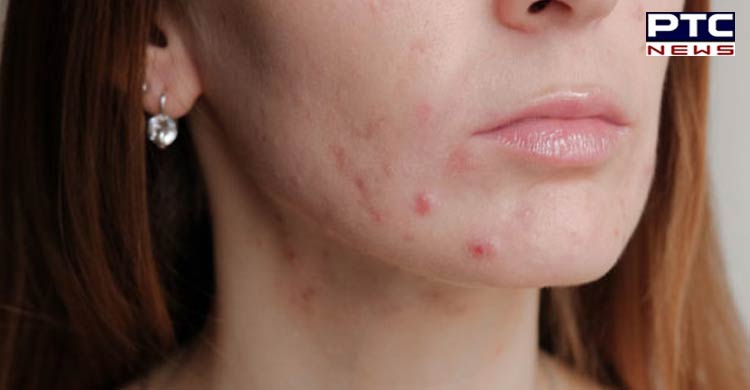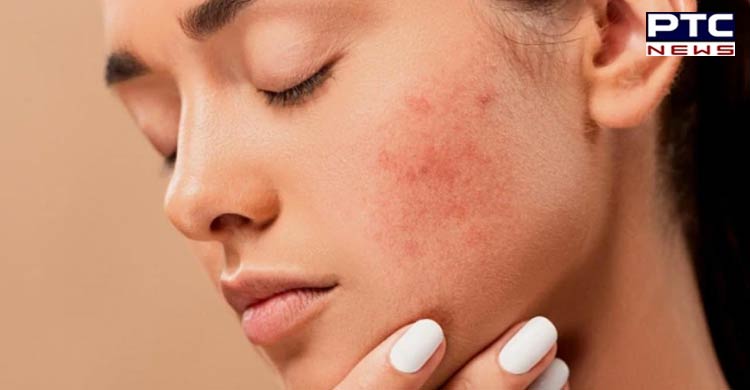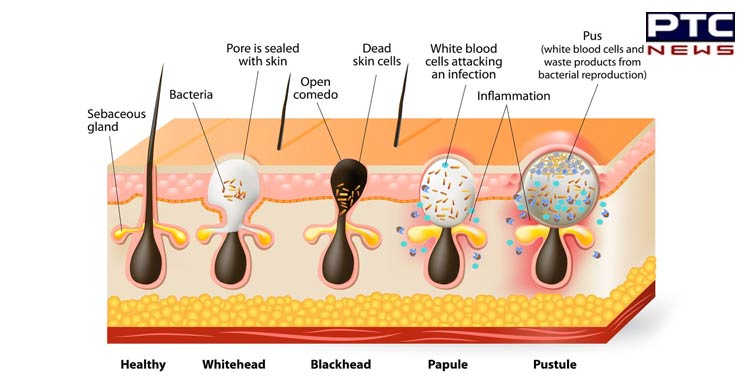

Research finds how fat cells in skin help fight acne
Advertisement, promoting and reviewing of health care and skin care products led to a boom of social media influencers especially during the pandemic period. Among all the skin care products, one of the most highly requested reviews was unsurprisingly for pimples or acne.
 Acne is among the most common skin diseases in the world. It has been known that hair follicles assist in the development of a pimple, but new research suggested the skin cells outside of these hair follicles play a larger role.
Acne is among the most common skin diseases in the world. It has been known that hair follicles assist in the development of a pimple, but new research suggested the skin cells outside of these hair follicles play a larger role.
 Also Read: Do loneliness, social anxiety have different neural states? Here's what experts believe
According to the study, published in 'Science Translational Medicine’, acne affects up to 50 million Americans each year. "These findings may transform the way we treat acne," said Richard Gallo, MD, PhD, Ima Gigli Distinguished Professor of Dermatology and chair of the Department of Dermatology at UC San Diego School of Medicine.
Hair follicles were formerly regarded to be the most essential factor in the development of acne. Fibroblasts are cells that are found in connective tissues all over the body. According to Gallo, they create an antibacterial peptide called cathelicidin in the skin, which is important in the development of acne. The surrounding skin begins a process called reactive adipogenesis, in which fibroblasts change into fat cells, to combat an infection within a hair follicle. Cathelicidin is also generated to aid in the fight against infection by inhibiting acne-causing bacteria.
Also Read: Do loneliness, social anxiety have different neural states? Here's what experts believe
According to the study, published in 'Science Translational Medicine’, acne affects up to 50 million Americans each year. "These findings may transform the way we treat acne," said Richard Gallo, MD, PhD, Ima Gigli Distinguished Professor of Dermatology and chair of the Department of Dermatology at UC San Diego School of Medicine.
Hair follicles were formerly regarded to be the most essential factor in the development of acne. Fibroblasts are cells that are found in connective tissues all over the body. According to Gallo, they create an antibacterial peptide called cathelicidin in the skin, which is important in the development of acne. The surrounding skin begins a process called reactive adipogenesis, in which fibroblasts change into fat cells, to combat an infection within a hair follicle. Cathelicidin is also generated to aid in the fight against infection by inhibiting acne-causing bacteria.
 The researchers performed skin biopsies from acne patients who had been treated with retinoids, a family of compounds derived from vitamin A that have been shown to improve skin health. To the researchers' surprise, the drug-enhanced cathelicidin expression after treatment, thus finding an additional, unknown mechanism for why retinoids help treat acne.
Researchers looked at skin lesions on mice that had been injected with the acne-causing bacteria and found that the mice had similar treatment responses. "The elevated expression of cathelicidin in acne biopsy tissue was a very exciting finding for us," Gallo added. "Knowing this will aid in the development of a more tailored acne treatment."
Retinoids are currently used to control the production of lipids in skin cells. One of the most serious negative effects of these medications is their teratogenic effects, causing fetal abnormalities in pregnant people. This limits the use of these drugs to only severe cases. The research team hopes these findings may assist in developing a more targeted approach to treating acne.
The researchers performed skin biopsies from acne patients who had been treated with retinoids, a family of compounds derived from vitamin A that have been shown to improve skin health. To the researchers' surprise, the drug-enhanced cathelicidin expression after treatment, thus finding an additional, unknown mechanism for why retinoids help treat acne.
Researchers looked at skin lesions on mice that had been injected with the acne-causing bacteria and found that the mice had similar treatment responses. "The elevated expression of cathelicidin in acne biopsy tissue was a very exciting finding for us," Gallo added. "Knowing this will aid in the development of a more tailored acne treatment."
Retinoids are currently used to control the production of lipids in skin cells. One of the most serious negative effects of these medications is their teratogenic effects, causing fetal abnormalities in pregnant people. This limits the use of these drugs to only severe cases. The research team hopes these findings may assist in developing a more targeted approach to treating acne.
 Also Read: UK reports first death from 'Lassa fever', sparks concern
Thus creating a therapeutic for acne that would be more selective with potentially less harmful side effects.
-PTC News
Also Read: UK reports first death from 'Lassa fever', sparks concern
Thus creating a therapeutic for acne that would be more selective with potentially less harmful side effects.
-PTC News
